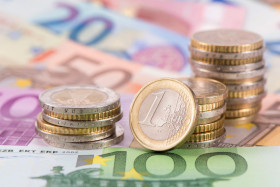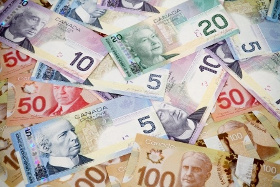The euro was weak today, falling for the sixth consecutive day to the lowest level in three years against the Swiss franc. Risk aversion caused by an unexpected surge of infected people in China was weighing on the shared 19-nation currency, while eurozone macroeconomic data was not helping as well.
The coronavirus disease named COVID-19 continued to spread across China, and the sudden surge of the number of infected people concerned investors greatly. Chinaâs Hubei province, situated in the center of the virus outbreak, reported a staggering number of 14,840 newly infected people on February 12, up from 1,638 just a day before. The death toll increased by a daily record of 242 to 1,310. While officials tried to calm down markets, saying that the sharp increase was a result of new counting methods, traders remain cautious for now.
As for macroeconomic data, Eurostat reported yesterday that eurozone industrial production dropped by 2.1% in December, exceeding the forecast of 1.8%. According to today’s report from the German Federal Statistical Office, the Consumer Price Index fell 0.6% in January from the previous month, the same as in December and matching expectations. Year-on-year, the CPI rose 1.7%.
Alleviating the negative impact of poor economic reports to some degree was the Economic Forecast for the eurozone released by the European Commission today. The EC voiced concern about the impact of the virus on the global economy:
The outbreak and spread of the â2019-nCoVâ coronavirus and its impact on public health, human lives and economic activity has been a source of mounting concern. It has spurred uncertainty about the short-term prospects of the Chinese economy and about the degree of disruption across borders at a moment in which global manufacturing activity remains at a cyclical low
Despite the concerns, the outlook for the eurozone economic growth remained unchanged:
Overall, the European economy remains on a path of steady and moderate growth. Over the next two years, annual GDP growth in the euro area is expected to settle at 1.2%, the same as in 2019. The outlook for 2020 and 2021 is unchanged since the autumn, as more positive developments are counterbalanced by negative events elsewhere.
Furthermore, the inflation forecast got a small upside revision:
On the back of supportive monetary policy, slightly higher oil price assumptions and some upward momentum in underlying price pressures, euro area headline inflation has been revised slightly upwards, to 1.3% in 2020 and 1.4% in 2021.
EUR/USD attempted to rally from 1.0872 to 1.0889 intraday but failed and retreated to 1.0868 by 11:54 GMT today. EUR/JPY sank from 119.71 to 119.23. EUR/CHF traded at 1.0632 after opening at 1.0634 and falling to the daily low of 1.0621 — the lowest level since February 2017.
If you have any questions, comments, or opinions regarding the Euro, feel free to post them using the commentary form below.



Be First to Comment